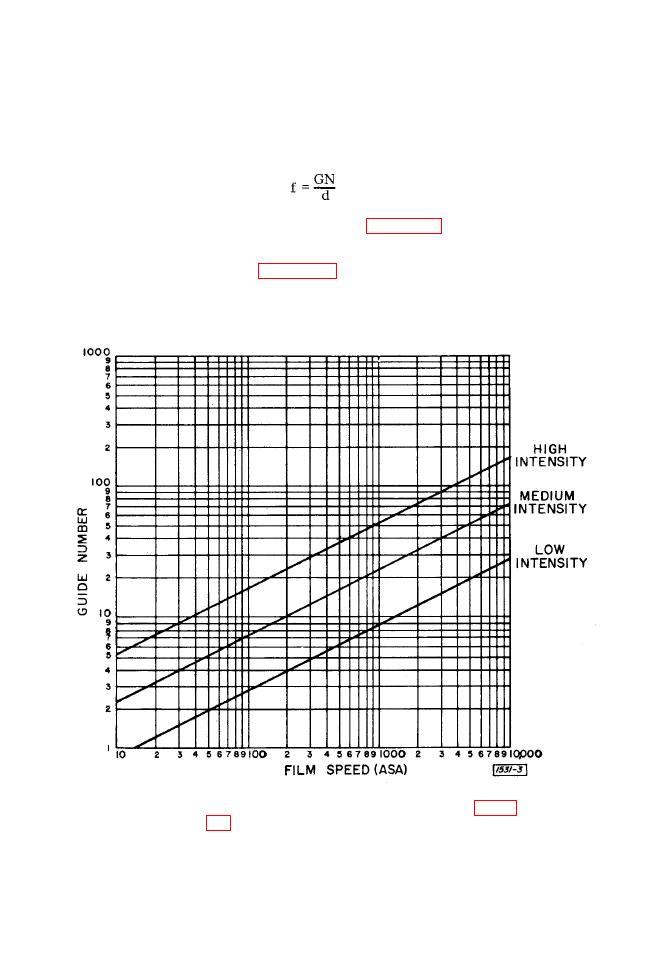 |
|||
|
|
|||
|
Page Title:
Figure 2-5. Guide number versus film speed for Type 1531 intensity settings |
|
||
| ||||||||||
|
|  by an external signal (e.g., from a photocell or microphone) for syn-
chronization of a single flash, or can be set to flash at a given rate for
multiple exposures. The entire system should be checked for proper
synchronization before the film is loaded into the camera.
Determining correct film exposure is simplified by the use of a
guide number (GN) that relates the lamp-to-subject distance (d) to the
camera-aperture setting (f):
The guide number, as determined from Figure 2-5, is used for single-
flash applications. When repetitive flashing of the stroboscope is required;
the guide number must be multipled by a correction factor (Guide Number
Multipler - K) taken from Figure 2-6.
It is necessary in computing aperture setting to modify the distance
measured between the stroboscope and the subject. The light from the
unit must be considered as coming from a point 1.5 feet behind the front
intensity settings. Dots for single-flash operatian: see Fig-
ure 2-6 for correction required for repetitive fleshing.
17
|
|
Privacy Statement - Press Release - Copyright Information. - Contact Us |